W hen we think about appetite, we often focus on what's on the plate. But have you ever noticed how your environment—especially the colors and arrangements around you—affects the way you feel about food?
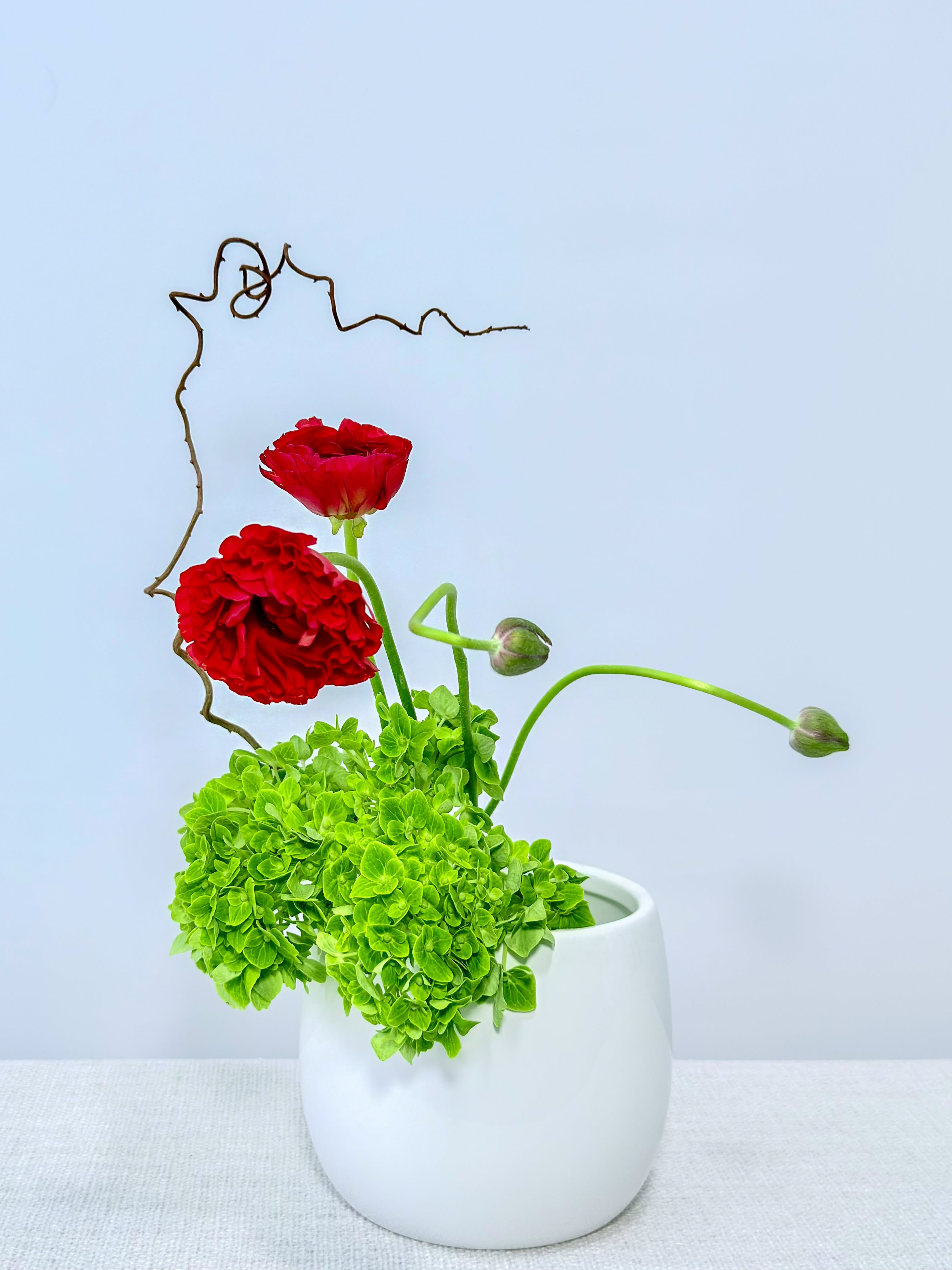
A moment of stillness captured in nature's most elegant form
At Narcisa Art Studio, we see this play out beautifully in the ancient Japanese art of ikebana. While ikebana is traditionally known for expressing seasonality, simplicity, and mindfulness, there's a fascinating, quiet sensory influence at play—one that gently shapes how we experience appetite.
The Color-Flavor Connection
Studies have long shown that color affects appetite. Red and orange tones tend to stimulate hunger, while cooler shades like blue or grey can diminish it. Fast food brands have known this for decades. But what happens when we translate this principle into the world of floral art?
In ikebana, color isn't just decoration—it's intentional. Each hue carries emotional and seasonal meaning:
Reds (Persian buttercups, peony, leaves)
Energizing, passionate, and appetite-boosting.
Oranges and yellows (chrysanthemums, sunflowers)
Warm and welcoming, ideal for festive meals or gatherings.
Greens and browns (pine, branches)
Grounding, natural, and calming—like a forest retreat.
Whites and pastels (lilies, cherry blossoms)
Evoke purity, subtlety, and palate cleansing—perfect for tea ceremonies or minimalist dining.
When these colors are arranged with care and purpose, they don't just please the eye—they subtly guide the emotional tone of the meal.
Flower Arrangements as Appetite Enhancers
Imagine sitting down to a meal with a simple Ikebana arrangement nearby—two red Persian buttercups, budding stems, and soft green hydrangeas. The colors are vibrant yet balanced, the lines elegant and spacious. Without saying a word, the arrangement draws your eye and invites you into the moment.
The rich hues and natural forms awaken more than your visual senses—they stimulate your awareness, preparing you to receive what comes next. Just like the aroma of good food, a beautiful floral arrangement can gently activate appetite. The warmth of red, the freshness of green, the careful balance of the elements—they spark something internal: a sense of anticipation, pleasure, and readiness.
At our Ikebana workshops and private events, we often see this unfold in real time. Guests linger a little longer, speak more softly, and notice more deeply. A thoughtfully placed Ikebana piece doesn't just elevate the setting—it turns eating into an experience, where food, flowers, and presence all come together.
Seasonal Influence Matters Too
Just as chefs craft seasonal menus, Ikebana artists shape their arrangements in harmony with the rhythms of the year. Each season brings its own colors, textures, and energy—and those qualities influence how we experience both flowers and food.
Spring
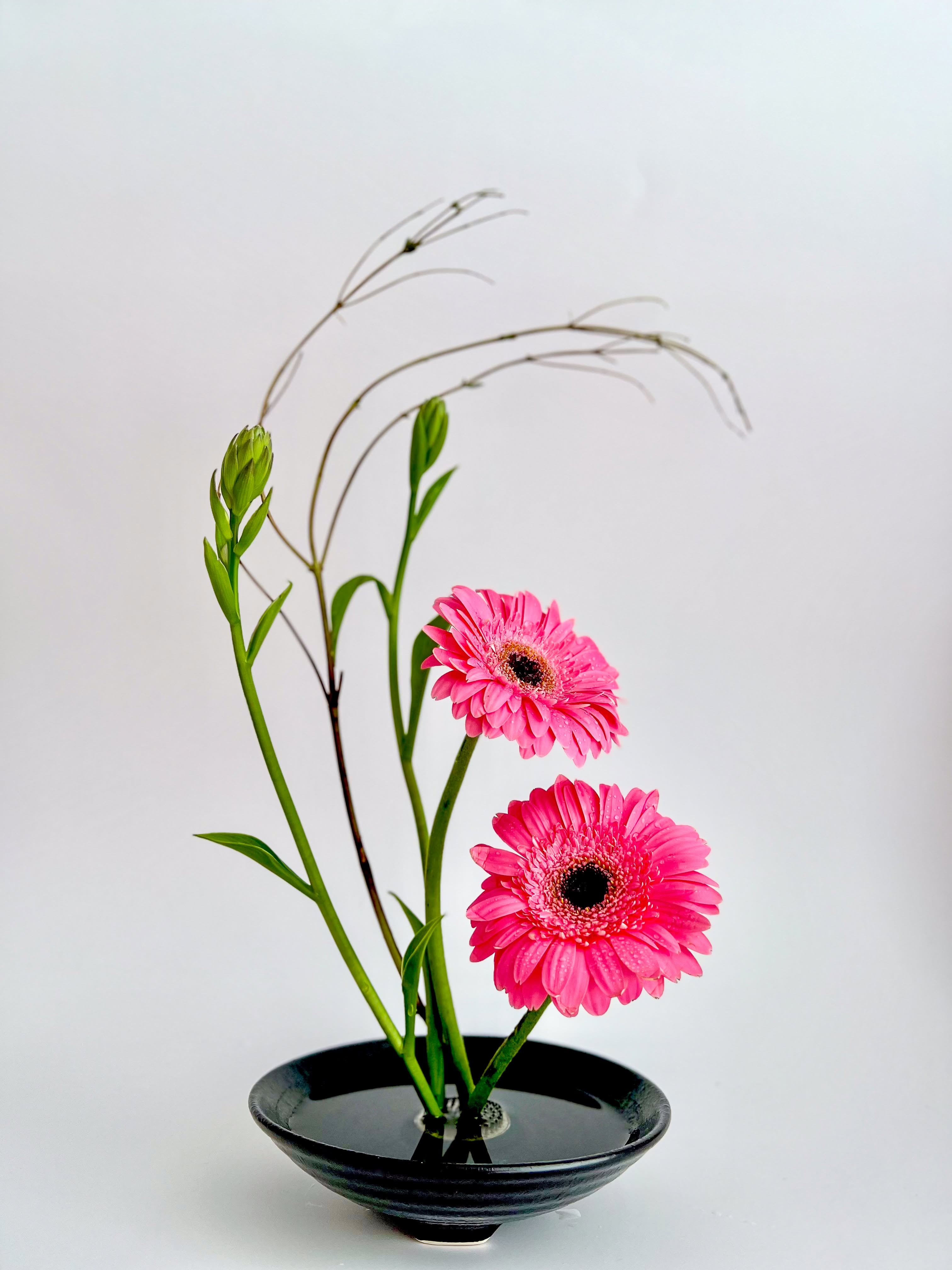
Spring arrangements often feature pink blossoms, tender greens, and soft lines—evoking freshness, renewal, and a sense of lightness.
Summer
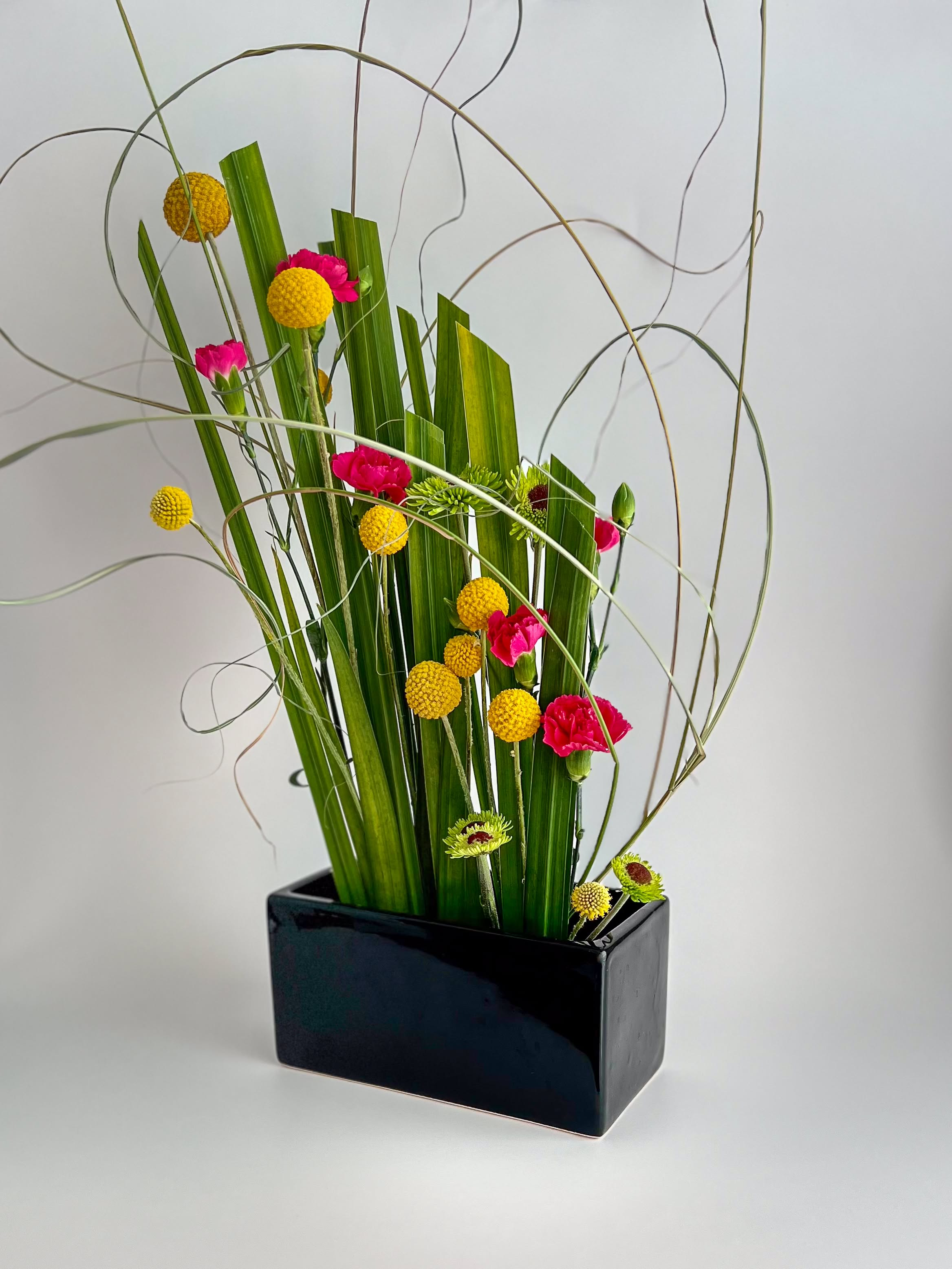
Summer brings playful contrasts: bold greens, vibrant blooms, and a looser, more relaxed feel—mirroring the season's warmth, outdoor meals, and a slower, sun-soaked pace.
Autumn
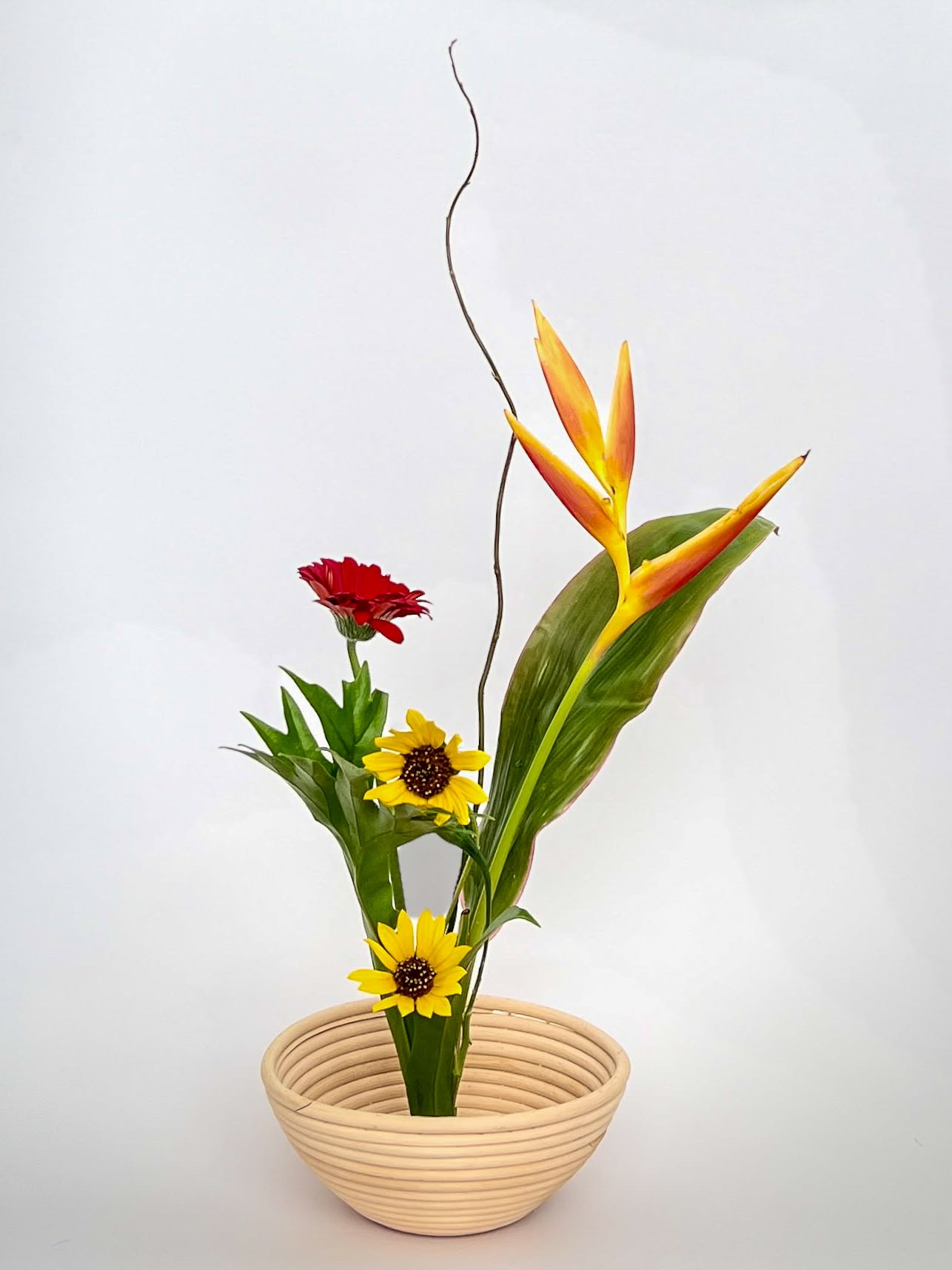
Autumn pieces shift toward deeper hues, textured branches, and earthy tones that echo the richness of harvest tables and cozy gatherings.
Winter
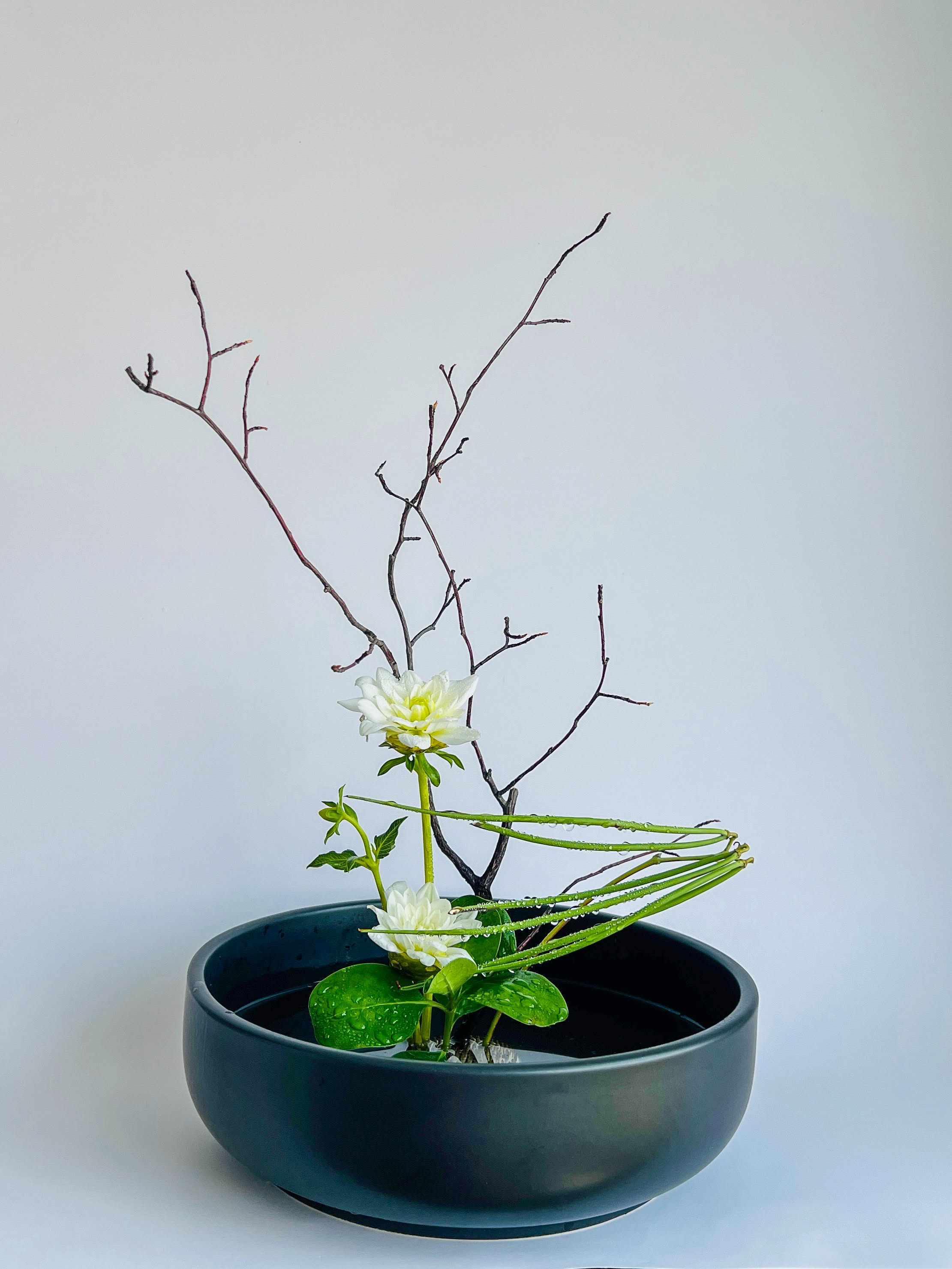
Winter ikebana is often quiet and tonal—sparse materials, bare branches, and subtle hues that pair beautifully with warm, simple meals and candlelit settings.
By aligning with the seasons, Ikebana doesn't just decorate a space—it enhances it. It helps us slow down, savor, and reconnect with what's right in front of us—on the table and within ourselves.
Ikebana as a Sensory Ritual
Whether you're preparing a special dinner or simply enjoying a quiet meal, the presence of a thoughtfully crafted ikebana arrangement can subtly enhance the experience. It's not about decoration—it's about sensory harmony. As with color theory in food, ikebana reminds us that beauty, balance, and appetite are deeply connected.
So next time you're hosting a meal, consider adding an ikebana piece nearby. You might find your guests not only eating more—but smiling more too.
Want to explore this idea further?
Join one of our upcoming Ikebana Workshops or book a private event where floral art meets sensory design. Let's create something beautiful—and delicious—together.